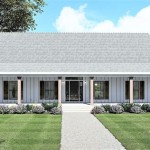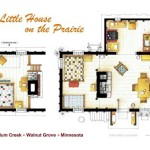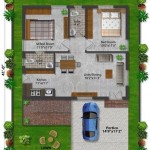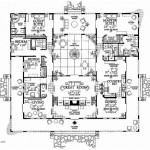Understanding Build My House Floor Plans: A Comprehensive Guide
Embarking on the journey of building a house is a significant undertaking, and at the heart of this process lies the floor plan. A floor plan is a scaled diagram of a room or building viewed from above. It visually represents the relationships between rooms, spaces, and other physical features. When homeowners search for services to "build my house floor plans," they are essentially seeking professional assistance in creating these blueprints that serve as the roadmap for construction.
Effective floor plans are crucial for several reasons. They facilitate spatial planning, ensuring the efficient use of available square footage. They are essential for communicating design ideas and construction specifications to builders, contractors, and other stakeholders. Furthermore, a well-designed floor plan can enhance the functionality and livability of a home, improving the overall homeowner experience.
The process of obtaining house floor plans can involve various options, from utilizing online software to hiring architectural professionals. Each approach offers unique advantages and disadvantages depending on individual needs, budget, and technical expertise. This article aims to provide a comprehensive understanding of the factors to consider when choosing to "build my house floor plans," exploring the different options available and the key elements that contribute to a successful home design.
Key Point 1: Exploring Options for Creating House Floor Plans: DIY, Software, or Professional Architect?
Several distinct avenues exist for creating house floor plans, each catering to different skill levels, budgets, and desired levels of customization. The first option involves a Do-It-Yourself (DIY) approach, where homeowners utilize online floor plan software or manually draw the plans themselves. This approach is often the most cost-effective, but it requires a degree of technical proficiency and an understanding of basic design principles. DIY floor plans are best suited for simple layouts or minor renovations where professional expertise is not essential.
Online floor plan software offers a more sophisticated alternative to manual drawing. These programs often provide pre-designed templates, drag-and-drop functionalities, and 3D visualization capabilities, streamlining the design process. While software can be user-friendly, it's important to consider the limitations of pre-designed elements and the potential for inaccuracies if the user lacks architectural knowledge. The cost of software varies, ranging from free basic versions to subscription-based premium options.
Hiring a professional architect or architectural designer represents the most comprehensive and personalized approach to "build my house floor plans." These professionals possess the knowledge, skills, and experience necessary to create detailed and accurate plans that meet specific building codes and regulations. They can provide expert advice on spatial planning, material selection, and structural considerations, ensuring that the final design is both aesthetically pleasing and functionally sound. While hiring an architect is the most expensive option, it often yields the best results, particularly for complex projects or custom home designs.
The decision of which option to pursue ultimately depends on factors such as the complexity of the project, the homeowner's budget, the desired level of customization, and the homeowner's comfort level with design software and architectural principles. Carefully weighing the pros and cons of each approach is essential for making an informed decision.
Key Point 2: Essential Elements to Consider When Designing House Floor Plans
Creating effective house floor plans involves careful consideration of several key elements that contribute to the overall functionality, livability, and value of the home. These elements include space planning, circulation, natural light, room dimensions, and adherence to building codes and regulations.
Space planning refers to the strategic arrangement of rooms and spaces within the available square footage. Effective space planning optimizes the flow of traffic, maximizes usable space, and ensures that each room serves its intended purpose efficiently. Considerations include the relationships between different rooms (e.g., kitchen proximity to dining room), the size and shape of each room, and the placement of furniture and fixtures.
Circulation refers to the movement of people throughout the house. A well-designed floor plan minimizes unnecessary hallways and maximizes direct access between frequently used rooms. The goal is to create a smooth and intuitive flow that enhances the overall user experience. Considerations include the width of hallways, the placement of doorways, and the avoidance of bottlenecks or obstructions.
Natural light is a crucial element of a comfortable and inviting home. Floor plans should incorporate ample windows and skylights to maximize the amount of natural light entering each room. Considerations include the orientation of the house, the size and placement of windows, and the use of light wells or other architectural features to bring light into interior spaces.
Room dimensions are critical for ensuring that each room is both functional and aesthetically pleasing. The size of each room should be proportionate to its intended use and should accommodate the necessary furniture and fixtures without feeling cramped. Considerations include minimum room size requirements for different functions, the placement of electrical outlets and lighting fixtures, and the creation of a comfortable and inviting atmosphere.
Finally, adherence to building codes and regulations is paramount. Floor plans must comply with all applicable local, state, and national codes, including requirements for safety, accessibility, and energy efficiency. It is imperative to consult with building officials or qualified professionals to ensure that the plans meet all necessary requirements before commencing construction.
Key Point 3: The Importance of Collaboration and Communication During the Design Process
Whether utilizing DIY software, consulting with an architect, or a combination of both, effective collaboration and communication are crucial throughout the floor plan design process. Open communication between the homeowner, the designer (if applicable), and the builder is essential for ensuring that the final product meets the homeowner's needs and expectations.
The homeowner’s role in the process is to articulate their vision for the house, including their lifestyle, preferences, and budget. Providing detailed information about desired room sizes, layouts, and features is essential for the designer to create a plan that accurately reflects the homeowner's needs. Homeowners should be prepared to provide inspiration images, sketches, and other visual aids to communicate their ideas effectively.
The designer's role is to translate the homeowner's vision into a detailed and accurate floor plan that meets all applicable building codes and regulations. The designer should provide expert advice on spatial planning, material selection, and structural considerations, guiding the homeowner through the design process and offering alternative solutions as needed. Regular communication and feedback sessions are essential for ensuring that the homeowner is satisfied with the progress of the design.
The builder's role is to interpret the floor plan and construct the house according to the specifications outlined in the documents. Open communication between the builder and the designer is essential for resolving any questions or issues that may arise during construction. Regular site visits and meetings can help to ensure that the construction is proceeding according to plan and that any deviations are addressed promptly. Any changes to the floor plan during construction should be documented and approved by all parties involved to avoid misunderstandings or disputes.
Clear and concise communication is especially important when utilizing online floor plan software. While software can automate certain aspects of the design process, it cannot replace the need for human interaction and collaboration. Homeowners should be prepared to provide detailed instructions and feedback to the software program to ensure that the final plan accurately reflects their vision. In cases where structural modifications or complex designs are involved, consulting with a qualified professional is highly recommended.
By fostering open communication and collaboration throughout the design process, homeowners can ensure that their "build my house floor plans" endeavor results in a home that is both functional, aesthetically pleasing, and perfectly suited to their needs and lifestyle.

Floor Plan Creator And Designer Free Easy App

Designing My Own House

Can Home Builders Build Floor Plans From Other Hedgefield Homes

House Plans How To Design Your Home Plan

House Plans How To Design Your Home Plan

Floor Plan Creator And Designer Free Easy App

Building My Dream House Plans Part 3 Vintage Revivals

House Plans How To Design Your Home Plan

What Makes A Good Floor Plan

Vignette Design Bucket List 7 Build A House From Scratch








